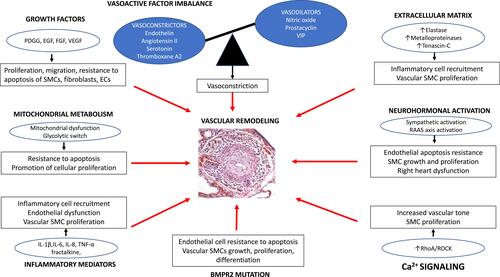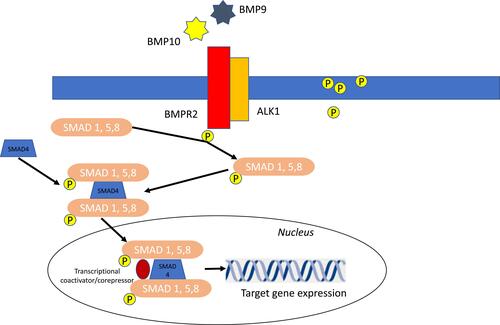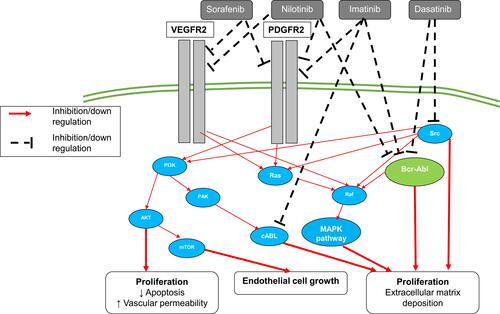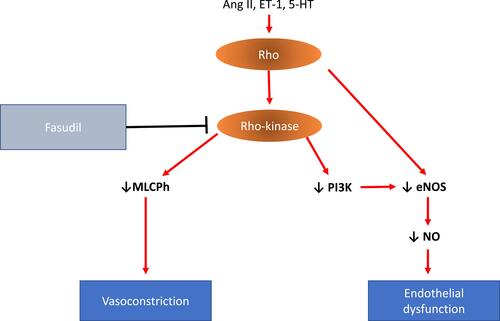Figures & data
Figure 1 Physiopathological mechanisms of pulmonary arterial hypertension.

Table 1 Summary of Clinical Trials Data of New Potential Drugs in the Treatment of PAH
Figure 2 Schematic of BMP signaling pathway signaling implicated in PAH pathogenesis. BMP9 and BMP10 present in the circulation initiate signaling by binding and bringing together BMPR2 and ALKI. BMPR2 phosphorylated ALK1 which then propagate the signal through phosphorylation of SMAD 1/5/8. Subsequently, SMAD 4 forms a complex with SMAD 1/5/8, which translocates to the nucleus regulating the expression of target genes.

Figure 3 Growth factors and tyrosine kinases (TK) signaling pathway.

Figure 4 RhoA/Rho-kinase signaling pathway. Wthin PAEcs and PASMCs, Rho-Rho kinase can be activated by several pathological mediators, including angiotensin II (Ang II), endothelin-1 (ET-1) and 5-hydroxytryptamine (5-HT). Rho-Rho kinase activation leads to inhibition of myosin light chain phosphatase (MLCPh) and subsequently vasoconstriction. Rho-Rho kinase also contributes to endothelial dysfunction through negative regulation of endothelial nitric oxide synthase (eNOS) and phosphatidylinositol 3-kinase (PI3K) activity causing reduced NO bioavailability.

